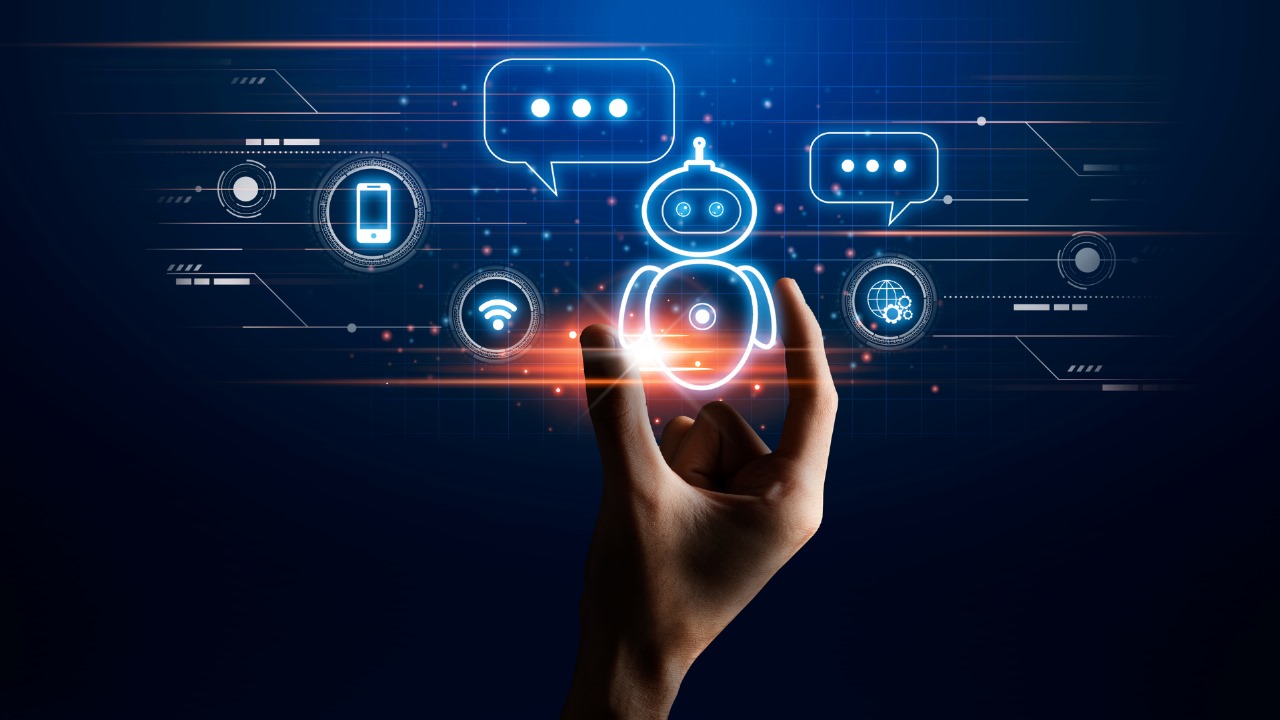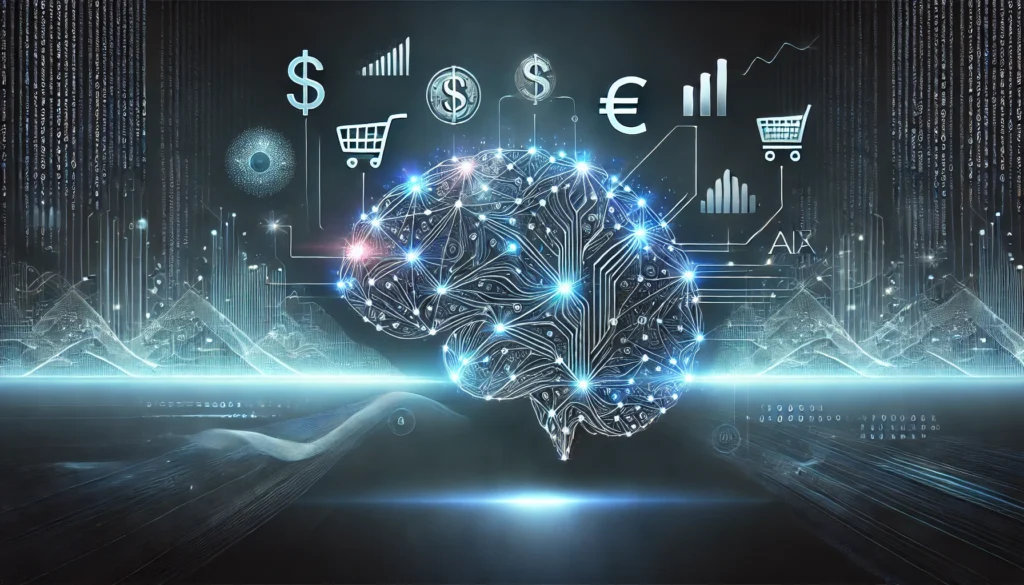Revolutionizing contemporary digital technology, AI-powered chatbots stand out as a remarkable breakthrough. These intelligent conversational agents empower organizations to broaden their outreach and provide support, enabling individuals to focus on interactions that require a human touch. With continuous advancements, chatbots are evolving to be more intelligent, flexible, and valuable, and the future promises an increasing presence of these virtual assistants. Below is a compilation of the top AI chatbots anticipated to make waves in2024.
What is an AI Chatbot?
An AI Chatbot, also known as an artificial intelligence chatbot, refers to a computer program or application designed to emulate human-like conversations with users through the utilization of artificial intelligence algorithms.
These chatbots rely on natural language processing (NLP) to comprehend and interpret user input. Additionally, they employ natural language generation (NLG) to generate responses that mimic human language, contributing to a more interactive and engaging user experience.
AI chatbots are generally classified into two fundamental categories:
Rule-based chatbots: This type of chatbot operates based on predefined rules and decision trees. It responds to specific input patterns with pre-programmed responses, following a set of predetermined guidelines.
AI-powered chatbots: Unlike rule-based counterparts, these chatbots leverage artificial neural networks and machine learning algorithms. They analyze data to enhance their conversational abilities progressively, evolving and adapting over time to provide more sophisticated interactions.
How do AI chatbots function?
AI chatbots operate on the foundation of natural language processing (NLP), a crucial technology that also underlies speech recognition in virtual assistants. The working mechanism of AI chatbots involves the following steps:
- User input is processed and analyzed by the AI chatbot using NLP to extract relevant data.
- Through the application of machine learning algorithms, the extracted data is categorized into predefined intent groups.
- The chatbot identifies any significant entities or parameters within the user’s input.
- Subsequently, the chatbot provides an appropriate response, utilizing either established rules or machine learning models.
What is the Best AI Chatbot?
Selecting the optimal AI chatbot for your organization can be a challenging task given the array of choices available. Here, we present a compilation of top-performing free AI chatbots to assist you in making an informed decision:
1. ChatGPT
Earning widespread acclaim as the standout phrase of the year, ChatGPT takes center stage as an innovative AI chatbot meticulously crafted by OpenAI. This advanced conversational tool excels not only in offering pertinent and contextually rich discussions but also in demonstrating remarkable user-friendliness. Its versatility extends its utility across a diverse spectrum of personal and professional endeavors, encompassing coding, event coordination, and even the seamless composition of emails.
Features
- Write and fix multiple coding languages
- Uses NLP for human-like conversations and responses
- Built on GPT-3.5, robust Large Language Model
- Good at creative texts
Pros
- Multiple use cases
- STEm knowledge
- Writing skills
Cons
- Slow
- Lacks real-time data
2. Bing Chat
Microsoft has recently introduced Bing Chat, a cutting-edge AI chatbot harnessed with the same advanced architecture as ChatGPT. Users can harness this innovative tool to inquire about a myriad of topics and receive not only comprehensive but also engaging, conversational responses. The chatbot is intricately designed to furnish references that seamlessly link back to original sources and the latest data.
Furthermore, Bing Chat goes beyond conventional functionality, extending its capabilities to offer creative support. Users can explore their artistic side with assistance in crafting poems, narratives, or music. Additionally, the chatbot facilitates imaginative ventures by enabling the generation of vivid images from text through the Bing Image Creator.
Features
- Uses GPT-4 model
- Customized and creative responses
- Includes cited references
- Functions as search engine
Pros
- Bing’s image generator
- Uses OpenAI’s most advanced LLM
- User-friendly interface
Cons
- Limited number of chats and sessions per day
- Lacks creativity
- Shorter chat responses
3. Chatsonic by Writesonic
Step into the world of Chatsonic, a groundbreaking creation by Writesonic that stands out as an exceptional tool, delivering unmatched speed in data, image, and speech searches. Its efficiency becomes evident as it effortlessly translates basic word prompts into a myriad of content possibilities, effortlessly navigating through the creation of intricate blog posts and sophisticated social media ads.
The user-friendly interface of Chatsonic not only streamlines the content creation process but also adds to its overall appeal, making it an ideal choice for content creators in search of a swift and diverse solution. Beyond its evident utility, Chatsonic represents a leap forward in the landscape of creative assistance, providing an innovative and efficient platform for those seeking an edge in content generation.
Features
- Text to art generation
- Voice commands
- Ability to get data from the latest news
- Responds like Siri and Google Assistant
Pros
- Natural language understanding
- Variety of use cases
- Fast and accurate response
Cons
- Word limit
- Lack of data
- Subscription models
4. YouChat
YouChat distinguishes itself as a cutting-edge conversational search assistant, propelled by the prowess of AI capabilities. Through the synergy of AI and NLP, YouChat not only enables human-like discussions but also emerges as a valuable learning tool for grasping novel concepts and addressing everyday inquiries. At its core, YouChat is driven by the overarching goal of enhancing the reliability of LLMs (Language Model Models) by incorporating intuitive search functionalities into its design.
In its commitment to delivering a holistic user experience, YouChat employs a multimodal approach that seamlessly integrates various elements such as code, text, graphs, tables, photos, and interactive features within its search results. This diverse and comprehensive approach ensures that users can access information in a variety of formats, enriching their interaction with the search assistant.
Features
- Conversational responses
- Multimodal search
- Real-time information
- Summarizes complex topics
Pros
- Provides and supports citations
- Fast online search
- Human-like conversations
- Inexpensive
Cons
- In beta stage
- UI lacks creativity
- Certain links are outdated
5. Google Bard
Google’s Bard, a revolutionary conversational AI chat platform. Bard AI leverages the advanced Google Language Model for Dialogue Applications (LaMDA) to craft responses. Bard aspires to be a valuable collaborator for a wide range of discussions. The platform is dedicated to delivering human-like conversations and understanding intricate user queries.
Features
- Uses advanced NLP and ML algorithms
- Integration with Google Cloud
- Customizable and fine-tuning
- Trained we latest data
Pros
- Access to Google
- Great text editing
- Uses less computing power
Cons
- Less accurate
- Not helpful in coding
- Do not provide citations or sources
6. ChatSpot
HubSpot has unveiled ChatSpot, an AI assistant integrated into its CRM platform, providing users with a versatile tool for tasks such as keyword research, sales outreach, content development, and more. Operating through a chat interface powered by GPT-4, ChatSpot leverages several databases to deliver efficient and diverse functionalities. This innovative assistant seamlessly combines the GPT-4 text generation model from OpenAI with the image creation prowess of the DALL-E 2 model.
Features
- Content generation
- Keyword research
- Integration with HubSpot account
- Sales and Reporting
Pros
- Easier to work with HubSpot CRM
- Easy-to-use interface
- Fewer dependencies on other teams
Cons
- Does not understand commands every time
- Time-taking
- Prompt templates lack functionality
7. HuggingChat
HuggingChat, the brainchild of Hugging Face, emerges as a groundbreaking open-source conversational model, capturing the attention of developers exploring the realms of AI and machine learning. With its foundation built on the state-of-the-art GPT-3 technology from OpenAI, this model represents a significant leap in natural language processing capabilities. Going beyond conventional chat interfaces, HuggingChat excels in analyzing user inputs, delving into language nuances and voice patterns to skillfully navigate discussions. The added feature of suggesting relevant topics and appropriate GIFs further enhances its appeal, providing users with a conversational journey rooted in emotions and tailored to ensure satisfaction.
Features
- Virtual hugs
- Interactive interface
- Customizable
- Uses OpenAssistant based on LLaMA
Pros
- Boosts mood
- Easy to use
- Fewer restrictions
Cons
- Factual errors
- Messy content outline
- Inconsistent outputs
8. Perplexity
Perplexity is an AI chatbot that combines a sleek user interface with internet accessibility and a wealth of resources. Tailored for idea testing, this chatbot provides users with a diverse range of prompts to explore, creating an ideal space for experimentation. Departing from the conventional approach, Perplexity AI not only aggregates search results but also delivers personalized responses to user queries, leveraging the power of OpenAI’s GPT-3.5 frameworks and Microsoft’s Bing search engine.
Features
- Backed by AIX ventures
- Easy to use and navigate
- Secure and private
- Supports Chrome extension
Pros
- Precise responses
- Explore different perspectives
- Improves critical thinking
Cons
- Not very accurate
- Relies on objective data
- Requires Copilot login
9. Socratic by Google
Google’s Socratic is a mobile application revolutionizing the way students seek answers through the integration of AI technology. Tailored for students, Socratic empowers them to pose questions related to their classroom subjects, and in return, it provides not just informative responses but also a conversational, human-like experience. The use of entertaining and distinctive images further enriches the learning process, making complex subjects more accessible
Features
- Scanning worksheets for answers
- Fun graphics
- Dedicated algorithms for various subjects
- Easy-to-understand lessons
Pros
- Educational
- Integrated with Google
- Easy to use
Cons
- Slack desktop version
- Lacks written text
- It might be used for quick answers
Which AI chatbot suits your needs best?
Choosing the right AI chatbot hinges on your individual requirements and context. The landscape is populated with various platforms and frameworks for chatbots, each offering distinct features and capabilities. To pinpoint the optimal chatbot for your needs, clarify the objectives it must achieve and the specific tasks or functions it should undertake. Consider the level of personalization and control you desire over the chatbot’s behavior and design. It’s essential to verify that the chosen chatbot platform seamlessly integrates with necessary systems, be it CRMs, content management systems, or other APIs. Moreover, ensure the platform can handle anticipated traffic and sustain performance, especially during peak usage periods.
Conclusion
To state the significance of AI chatbots for B2B and B2C sellers is not hyperbole; it is a clear reality. Today’s consumers not only seek prompt gratification but also crave a more personalized online purchasing experience, positioning chatbots as instrumental tools for businesses. The recent breakthroughs in natural language processing have successfully enabled chatbots to carry out conversations with customers in a manner closely resembling human interactions.







